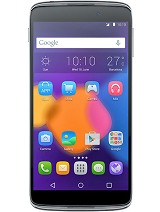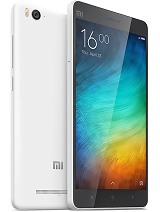Moto G 3rd Generation or Moto G 2015 or Moto G3 Review
Introduction
It is hardly a surprise that the third generation Motorola Moto G is one of the most anticipated smartphones of 2015. After all, in less than two years after the first iteration of the smartphone (Moto G became the most successful phone in the company's history) made its debut, the Moto G product family has successfully redefined what a budget Android handset should look, feel, and perform like and how much it should cost. In order to stay on top of this highly competitive smartphone
segment, the Moto G (3rd gen) packs a considerably improved hardware in
comparison to the outgoing model, while keeping the same $179.99
starting price tag.
In order to stay on top of this highly competitive smartphone
segment, the Moto G (3rd gen) packs a considerably improved hardware in
comparison to the outgoing model, while keeping the same $179.99
starting price tag.The newcomer features a beefier 64-bit Qualcomm Snapdragon 410 chipset and 2GB of RAM on board, as well as a 13MP main camera with 1080p video capture and 5MP front-facing unit.
However, the above specs are not the new Moto G's trump card. The device's IPX7 water-resistant body and customizable colors promise to put the smartphone head and shoulders above its competitors.
Key features
- 5" 720p IPS LCD display with 294 ppi; Corning Gorilla Glass 3
- 64-bit Qualcomm Snapdragon 410 MSM8916 chipset; 1.4GHz quad-core CPU; Adreno 306 GPU; 1GB/2GB of RAM
- 13MP main camera with f/2.0 aperture; dual-LED (dual tone) flash; 1080p video capture @ 30fps; Quick Capture gesture controls
- 5MP front-facing camera with f/2.2 aperture; Quick Capture gesture controls
- Stock Android 5.1.1 Lollipop with absolutely no bloatware
- 8GB/16GB of built-in storage; microSD card slot
- Quad-band GSM/GPRS/EDGE; 4G LTE; UMTS/HSPA+; CDMA connectivity
- Wi-Fi b/g/n; Bluetooth 4.0; FM radio; microUSB port; GPS, GLONASS, Beidou support
- Active noise cancellation with a dedicated microphone
- IPX7 water-resistant body
- Customizable body through Moto Maker
- Attractive contract-free price tag
- 2,470mAh non-removable battery
Main disadvantages
- No Wi-Fi ac support
- No NFC
- Non-removable battery
- No stereo speakers (the previous gen Moto G had them)
- Moto Maker is available in select markets at launch
- Poor video codec support
The option to customize the XT1540 Moto Maker and the IPX7 certification are a first for the Moto G family. In addition to being attractive for current Moto G owners looking forward to upgrade, the features open Motorola to an even wider audience of potential customers.
This year's Moto G is one of the first major products that Motorola launched with Lenovo at the helm. At a quick glance, it appears that the Chinese tech giant has kept the same winning formula that Google introduced during its tenure as an owner of the storied American company and will further augment with the retail distribution chain they already have in place throughout the world.
 As always, we'll kick our review off with an unboxing of the new Moto
G, followed by a closer look at its design and hardware. Head over to
the next page to find out if the smartphone lives up to the promises
delivered by its feature set!
As always, we'll kick our review off with an unboxing of the new Moto
G, followed by a closer look at its design and hardware. Head over to
the next page to find out if the smartphone lives up to the promises
delivered by its feature set!Unboxing
Like older members of the product family, the new Moto G comes in a rather basic retail package. Inside the small retail box, you will find only a wall charger and a couple of booklets.Additional bundled accessories have never been a Moto G series forte and the third generation is no exception. Considering the device's price tag however, we don't believe the one should be too picky about free headphones or a protective case.
Design
Design-wise, the new Moto G is unmistakably a Motorola. However, the newcomer's polycarbonate frame brings it closer to last year's Moto X in terms of looks. We find this to be a great thing, as the third generation of the budget smartphone carries a premium aura which its predecessors simply did not possess.Motorola's slightly curved body and signature dimple have once again made it to the new Moto G. Overall, we find the smartphone to be a handsome bloke with plenty of character.
Moto Maker
Moto Maker is another major Moto G (3rd gen) highlight, as well as a major breakthrough in the handset's price segment. Introduced alongside the first Moto X back in 2013, the customization program allows users to deck out the new Moto G in a color combo of their choice just before purchase.Just like in the Moto X (2014), users can choose from white or black front panel. The former comes with a silver frame, while the latter features a dark gray solution.
The camera accent on the back of the smartphone can be customized as well. The colorful back covers can be swapped anytime - there are no surprises here.




Some of the available color combos in Moto Maker
Build quality and handling
The new Moto G feels superbly put together. Thanks to the IP rating, the textured removable back cover of the device feels as if it's an integral part of it. The entire front of the smartphone is covered by Corning Gorilla Glass 3, so scratches from casual use are not as likely.Moto G's IPX7 rating means that the handset can survive a dip in up to 3 feet of water for up to 30 minutes, so long as its back cover is tightly sealed. Kudos to Motorola for achieving that without sealing all ports with ugly and cumbersome protective caps.
With physical measures of 142.1 x 72.4 x 11.6mm, the new Moto G has a slightly larger footprint than the second generation. At 155 grams of weight, the newcomer is only six grams heavier than its predecessor, despite being waterproof and with significantly bigger battery.
Handling the Moto G (3rd gen) is a pleasure. The device feels grippy and secure, so a user can perform most common tasks with one hand. Motorola's custom gesture controls are also quite helpful on this instance.
Controls
Unsurprisingly, the new Moto G has similar controls as its predecessors, as well as just about every other Motorola smartphone available at the moment. The overall layout is intuitive and easy to get used to.Above the display is where the earpiece and the 5MP front-facing camera reside. The ambient light and the proximity sensor are also located there. Below the screen is the single loudspeaker of the smartphone. This time around, Motorola has unfortunately ditched the stereo speakers of the second generation Moto G, probably for the sake of a bigger battery and the IPX rating.
There is absolutely nothing on the left side of the smartphone. The power/lock key and the volume rocker are both located on the right side. The former has a distinctive texture, so it is easy to tell apart on the go.
The top of the smartphone is home to the 3.5mm audio jack, as well as a secondary microphone for active noise cancellation. A microUSB port sits alone on the bottom of the Moto G.
The customizable strip on the back of the smartphone is home of the 13MP main camera with dual-LED flash and the signature Motorola dimple. It is interesting to note that, other than the small "M" on the dimple, there is absolutely no other manufacturer logo on the new Moto G.
Removing the battery cover reveals the micro-SIM and the microSD card slot. The 2,470mAh battery of the device is not removable.
Display
Like its predecessor, the new Moto G features a 5" IPS LCD display with a resolution of 1280 x 720 pixels. The latter deliver a pixel density of 294ppi which, while not mind-blowing, is the norm in the handset's price range.The display's contrast and viewing angles are stellar for the price range. Overall, the screen of the latest Moto G feels like a quality unit despite its modest resolution.
 In comparison to last year's model, the screen of the new Moto G is
noticeably brighter. The newcomer's colors are also more accurate even
when viewed with a naked eye - the second generation Moto G's display is
considerably more saturated.
In comparison to last year's model, the screen of the new Moto G is
noticeably brighter. The newcomer's colors are also more accurate even
when viewed with a naked eye - the second generation Moto G's display is
considerably more saturated.Battery life
Moto G (3rd gen) has a significantly larger 2,470mAh battery than its predecessor (last year's iteration has a 2,070mAh unit). Combined with the energy-sipping 64-bit chipset and stock Android Lollipop, the new power cell propelled the smartphone to an impressive endurance rating of 76 hours. This means that the smartphone will last a tad over three full days
if used of an hour each of telephony, web browsing, and video playback
daily. In our experience, the handset easily made it through a full day
of heavy use - enough for most of the users if you believe market
research companies.
This means that the smartphone will last a tad over three full days
if used of an hour each of telephony, web browsing, and video playback
daily. In our experience, the handset easily made it through a full day
of heavy use - enough for most of the users if you believe market
research companies.Connectivity
In terms of connectivity, the new Moto G has quad-band GSM/GPRS/EDGE and 3G globally to cover the basics. There are also CDMA-enabled models. This time around, 4G LTE is also standard even on the cheapest variant of the device - compatible bands will vary in each market of availability. A Dual-SIM option of the device will also be available in markets where the solution is popular.Also on board is Bluetooth 4.0 alongside Wi-Fi b/g/n with Wireless Hotspot support. Wired connectivity is covered by a microUSB 2.0 port with USB host.
Although it is missing some of the more advanced connectivity features like NFC and IR-port, or Wi-Fi ac, the 2015 Moto G does have an FM radio, as well as SatNav with GPS, GLONASS and Beidu support. In short, the smartphone has all the basics covered and then some more.
A capable 13MP snapper with dual-LED flash
The new Moto G packs a 13MP main camera with f/2.0 lens and dual-tone LED flash. Even on paper alone, the newcomer's photography package promises to be a massive improvement over the 8MP snapper found in last year's iteration. The camera does have the same minimalist interface as on the Moto X
and E, which includes just two on-screen buttons on the right-hand side
for video recording and front-facing camera. Taking an image is done
simply by tapping the screen.
The camera does have the same minimalist interface as on the Moto X
and E, which includes just two on-screen buttons on the right-hand side
for video recording and front-facing camera. Taking an image is done
simply by tapping the screen.The available advanced settings include HDR with available auto mode, touch capture, panorama, geo-tagging, widescreen mode, and shutter sound.
The twist gesture to launch the camera that debuted in the Moto X two years ago has finally made it to the Moto G series with the third installment. Motorola has expanded the gesture's functionality even further this time around - a second twist right after the first one switches to the front-facing camera.
The Moto G 3rd gen camera is a quite similar to the one on the Nexus 6, though there is no OIS and the optical system seems slightly inferior. The images produced are a noticeably noisier than the one by the Nexus 6 and there is corner softness.
Still, we're quite impressed that manufacturers are now able to deliver consistently good image quality at this market price point of around $200/€200.
1080p video recording is finally a go
We are happy to report that 1080p video capture has finally made it to the Moto G series with the third generation. The resolution is now the default choice for the smartphone - 720p in slow motion is the other available option.The camcorder interface is exactly the same as the still camera one. One you launch the camera, you simply tap on the key in the top right corner to begin recording.
Final words
The 3rd gen Moto G is the most capable member of the popular product family to date. Thanks to its zippy chipset, excellent camera and battery life, up to date stock Android, and superb build quality, the newcomer is also one of the most appealing entries in its price range. Unlike last year's rather conservative second generation, Motorola
has really pushed the envelope with the latest Moto G. Newly introduced
features like Moto Maker and IPX7 water resistance help the smartphone
stand out in its overly crowded segment.
Unlike last year's rather conservative second generation, Motorola
has really pushed the envelope with the latest Moto G. Newly introduced
features like Moto Maker and IPX7 water resistance help the smartphone
stand out in its overly crowded segment.Moto G (3rd gen) key test findings
- Signature Motorola build quality and styling
- Moto Maker promises to be a boon for individualists
- IPX7 rating is a welcome sight in the spec sheet
- Excellent battery life
- Display is good, though a bump in resolution would have been appreciated
- Solid chipset performance (for the price range)
- Stock, bloatware-free Android 5.1.1 Lollipop is like a blank slate for user customizations
- Massively improved camera over past Moto G generations
- Video player lacks support for basic codecs
- It is great to see that Motorola's feature controls made it to a budge-friendly device
- It would have been great if Motorola had kept the stereo speakers from the past generation
The device's battery life truly caught us by surprise. Yes, we did expect the new Moto G to do better than its predecessor in out battery test, but scoring an endurance rating of 24 hours more than its predecessor is as sweet as it gets.
Camera performance is impressive too, especially when compared to last year's model. Coupled with the intuitive gesture controls and clean interface, it truly allows the new Moto G to punch above its weight in this department.
We really wish that Motorola had brought NFC and speedier Wi-Fi to the new Moto G. The standard LTE connectivity however, is a welcome addition to the device's feature set.
A 1080p display would have also been a welcome sight, as some of the Chinese competitors of the new Moto G offer the feature. Considering the low starting price tag of the device however, many will consider our grief as simply nitpicking.
Speaking of starting price, the Moto G (3rd gen) costs as little as $179.99б€199 for an unlocked device with a gig of RAM and 8GB of expandable storage. Spending an additional $40 will get you a variant with 2GB of RAM and 16GB of storage - the model that makes most sense to go for. The device's price tag tops out at $225/€250 for a fully customized 16GB version.
 As always, we took a look around at some of the Moto G competitors in
its price range. Here are some of the ones worth considering.
As always, we took a look around at some of the Moto G competitors in
its price range. Here are some of the ones worth considering.The Asus Zenfone 2 ZE551ML variant with 2GB of RAM costs only $199 and brings 5.5" 1080p display, a more powerful Intel SoC, and a capable 13MP camera. The Taiwanese offering however, lacks water resistance and lacks the charming looks of the new Moto G.
The Meizu m2 note is a strong contender from China that handily beats the new Moto G on specs. Limited global availability and no IPX rating however, will likely prevent the m2 note from being a full-blown Moto competitor.
Alcatel Idol 3 (5.5) and Idol 3(4.7) are also worthy alternatives of the Moto G, with stereo speakers and higher resolution display (in the case of the 5.5" variant). However, the Alcatel duo lacks IPX rating. Its UI on the other hand, takes a bit of getting used to.



Asus Zenfone 2 ZE551ML • Alcatel Idol 3 (5.5) • Meizu m2 note
All of these devices are considerably larger than the Moto G 3rd Gen but have superior specs.
If you are after a more pocketable alternative, you should perhaps look at Xiaomi Mi4i, Meizu m2, Samsung Galaxy J5, and of course, Sony Xperia M4 Aqua.




Xiaomi Mi 4i • Meizu m2 • Samsung Galaxy J5 • Sony Xperia M4 Aqua
With so many rivals vying to steal the Moto G’s thunder these days, we reckon that the latest generation of the smartphone won’t have a cakewalk in its segment. However, by adding beefier hardware, IPX7 rating, and Moto Maker to the product family, Motorola has done plenty to keep the newcomer in the mix. Therefore, we believe that once again, the new Moto G will deservedly be one of the top choices in its price range.
Subscribe to:
Post Comments
(
Atom
)
























































Videoocn Prepaid Punjab, Haryana, UP East, Bihar, & Madhya Pradesh - First Recharge Voucher, prepaid mobile phone connections and prepaid mobile plans. prepaid mobile plans
ReplyDeleteI think this is the best blog I have been through all this day.
ReplyDeleteMoto G3 Case
Thanks for this great post, i find it very interesting and very well thought out and put together. I look forward to reading your work in the future. motorola moto g manual
ReplyDelete